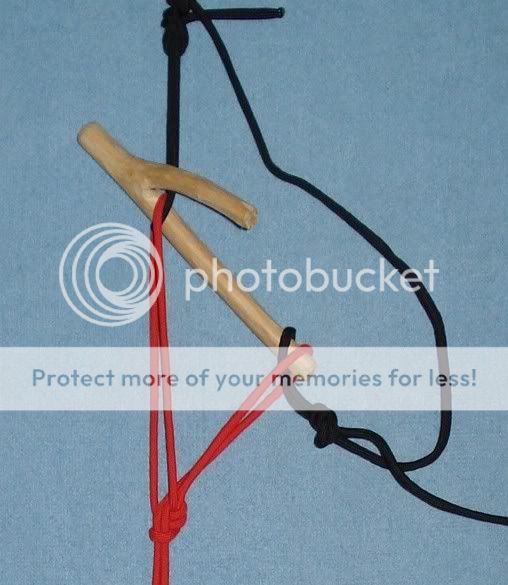- Joined
- Apr 14, 2006
- Messages
- 7,021
I will *make* time tomorrow to try again and get some good pictures to post. This connection has limited upload/download bandwidth, so I have to be careful about posting pictures, unfortunately.
Excellent, rocketbomb, I'm looking forward to it.
I'm going to try this out. I have zero trap making experience, but a few things come to mind reading this thread:
1. It seems you could also adjust the equilibrium point (and I assume the sensitivity) by how you space the loops on the anchor line. In other words, you could get a longer stick or make the standing end of one loop longer or shorter to adjust. I know a longer stick is a better mechanical advantage, but the idea of moving the loop instead of changing the stick leads me to my next thought... Your thinking is good, but the longer stick really represents, greater distance between the loops (which requires a longer stick), which is what provides the mechanical advantage - moving the loop does exactly that. :thumbup:
2. It seems like you could make an infinitely adjustable anchor by using a big loop instead of 2 smaller ones. In other words, take a piece of cord & tie the ends to make a loop. Then put the loop under an anchor like an exposed root. Now pull the respective ends of the loop up on both sides of the anchor and put them on the respective ends of the stick. That way you could pivot the stick under tension by pulling one end or the other of the loop. When you get it about where you want it, you could take the loop off and put it around the anchor again to secure where the turn in the bight is. I'll try and post a pic to show what I mean (and to see if it actually works).
Once again, your thinking is excellent. I know exactly what you mean, but a drawing or picture would be good, for me and others.
This is taken care of with a special knot which has yet to be posted, but I did something similar at one time, due to the aggravation of trying to get the loops in the correct position, relative to one another. I tied a loop in each end of a piece of cord, positioned the loops and then secured the position with an overhand knot . This was then secured to a root, etc. with a toggled bend.(this is discussed in my next installment, that is if you don't continually read my mind and scoop me).
3. It also seems that you need to have the line to the snare be at least the same or larger in diameter as the line to the anchor. It seems like a small snare line (e.g. copper wire) could possibly slide underneath the anchor line with a quick pull without releasing the trigger. A larger diameter snare line would force the anchor loop off.
This was a worry I also had, but in practice, it never happened. I also considered using an overhand knot, to increase the bulk to facilitate release. Once again, never proved to be necessary. (I think it was edgyone that also addressed this consideration.
Pics to follow, but it might take a bit. Definitely looking forward to it.
I must say my faith is being restored
If people don't participate in a skills thread, why should the skills author (for want of a better word) go to the trouble?
(leaving my soap box...........)
Doc




























